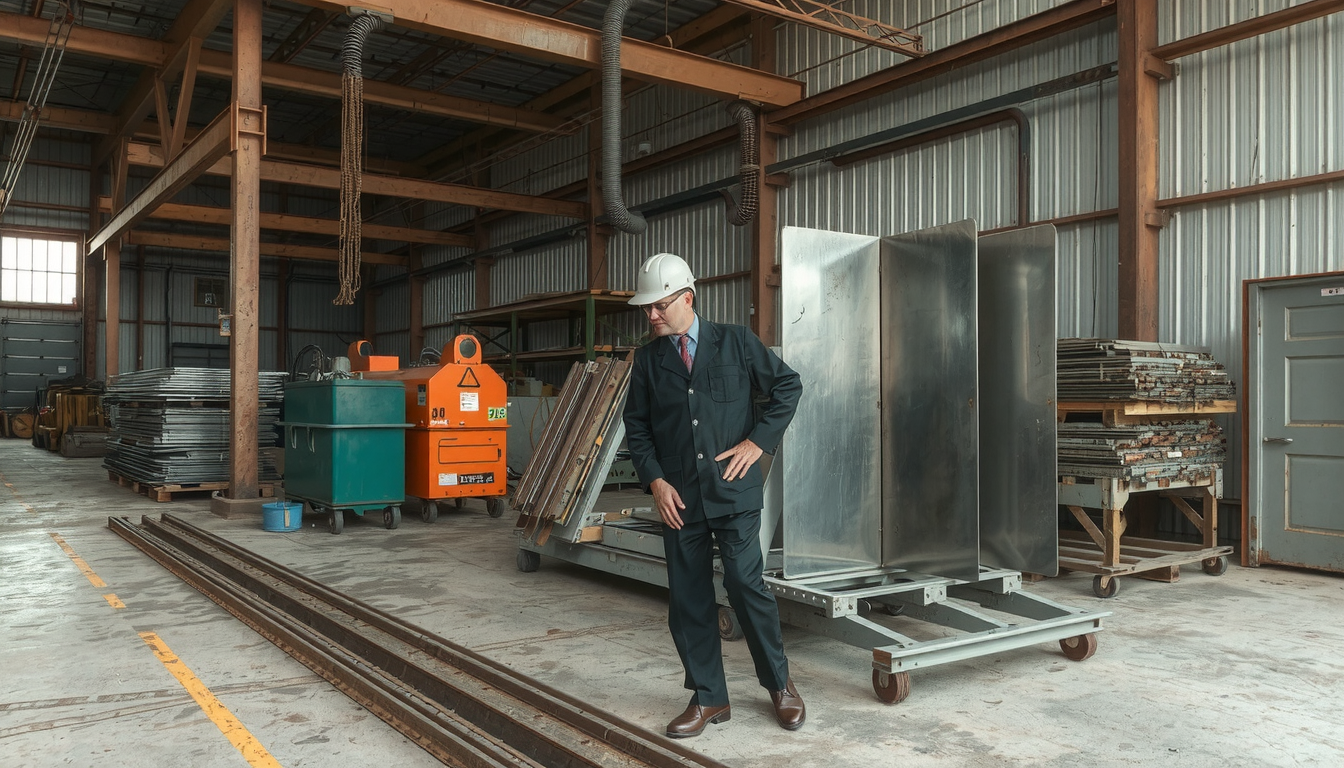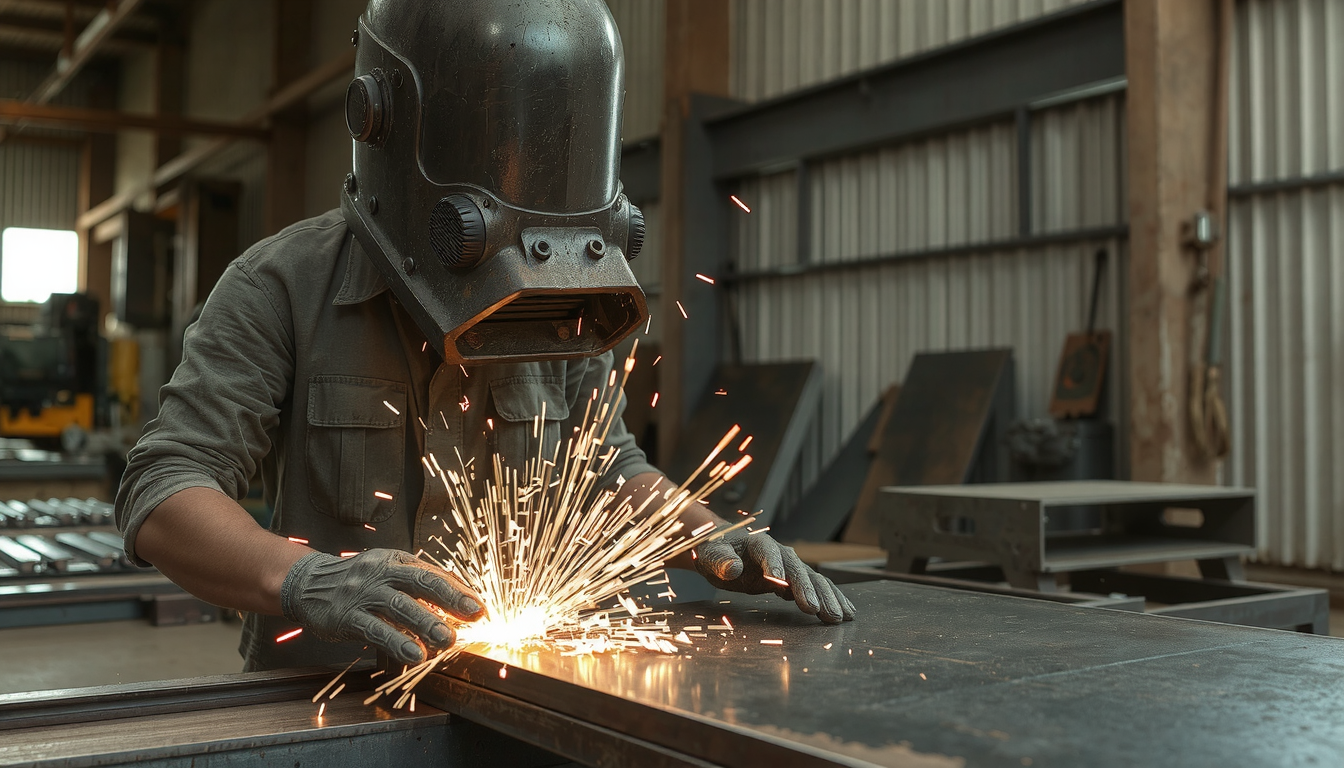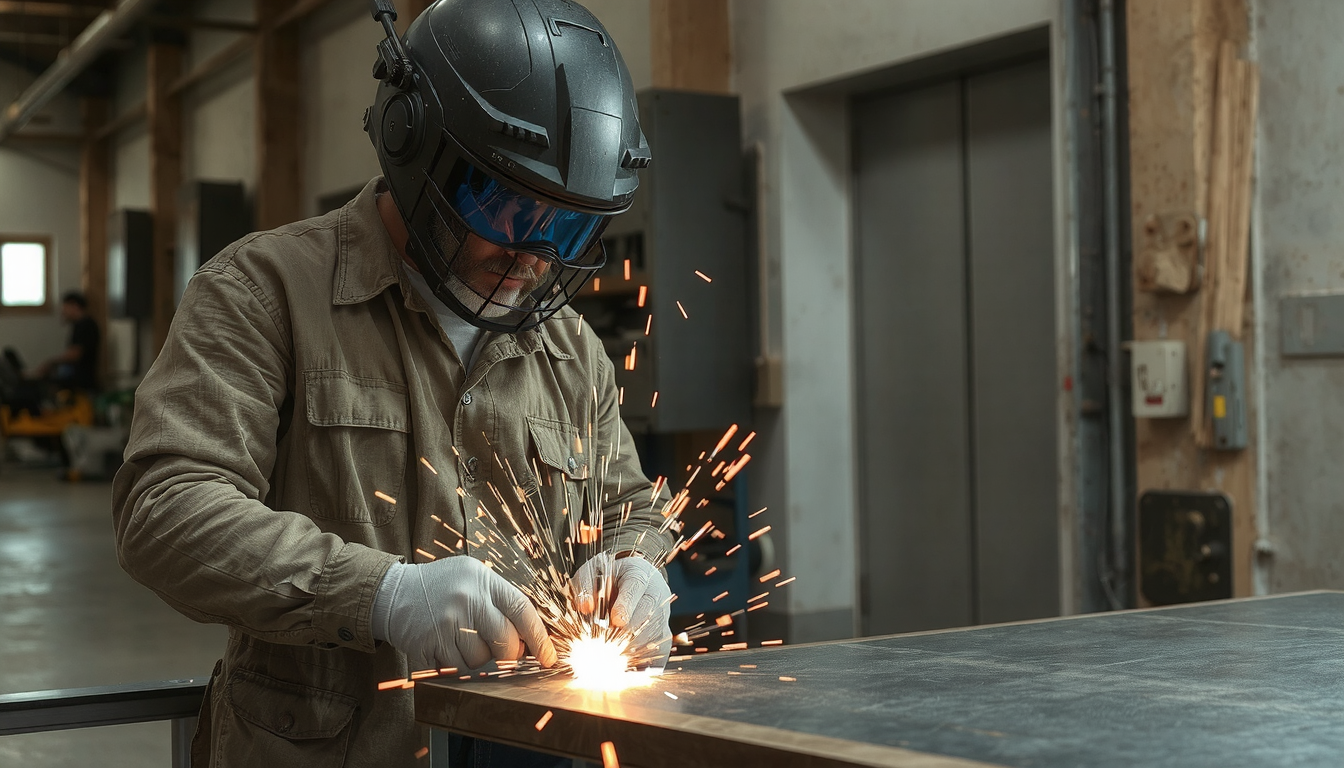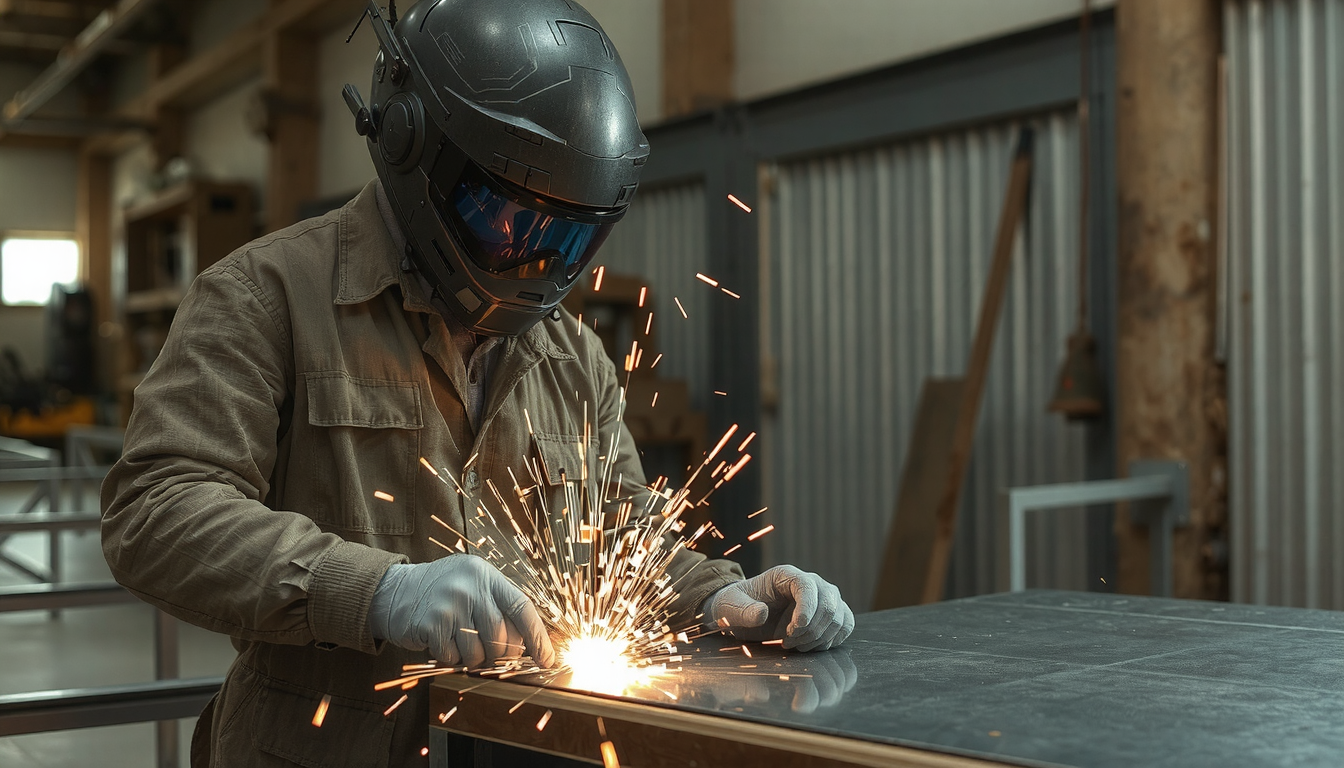So, exactly how much do you have to pay for sheet metal? The cost for the raw material will vary from $2 per square foot if you are buying simple steel up to $25 or more per square for materials like copper.

The above price is merely for the raw material itself. The actual amount you would be charged depends on many factors such as the material you are using, the thickness, the quantity you want to buy, and any processing it needs before you can use it.
In this article, we will elucidate all the price determinants of sheet metal. We’ll examine material prices and fabrication charges. Also, we will give practical hints to help you cut costs on your project.
The 7 Main Factors That Affect Sheet Metal Pricing
Understanding the factors that make the prices of sheet metals go up or down helps you in budgeting your project. Multiple factors are in play that decide the final figure for the cost of sheet metal. Knowing about them will make it easy for you to understand quotes and to make the right decisions when purchasing them.
Type of Material (The major cost deciding factor)
The choice of metal you make is the biggest factor that influences the cost. There is a clear list of materials in terms of the cost. The lowest price is for mild steel, aluminum is in the middle position while stainless steel is the most expensive one. On the other hand, copper and brass belong to the premium metals that are costly.
This difference in prices is due to the raw material cost of the metals as well as the difficulty they present in the manufacturing of metal sheets.
Thickness (Gauge)
Sheet metal thickness is measured with the aid of gauges. This system of measurement can be a little confusing as the lower the gauge number, the thicker and more expensive the sheet will be. 10 gauge will give a thicker and heavier sheet than a 22 gauge sheet.
When it comes to thicker metals, the quantity of the material is an important factor. More materials mean more price. Below is a simple table that thus illustrates how gauging and thickening relate.
| Номер манометра | Толщина (в дюймах) | Thickness (Millimeters) |
|---|---|---|
| 24 Gauge | 0.0239″ | 0.607 mm |
| 20 Gauge | 0.0359″ | 0.912 mm |
| 16 Gauge | 0.0598″ | 1.519 mm |
| 10 Gauge | 0.1345″ | 3.416 mm |
Sheet Size and Quantity
Sheet metal usually comes in standard sizes, and those sizes are sold. For example, you can find sheets that are 4 feet by 8 feet, or 4 feet by 10 feet. It is a better option price-wise to buy full sheets which are usually cheaper per square foot than buying individual small, custom-cut pieces.
Buying the whole size also helps you cut your costs. Suppliers usually give better prices for larger orders. It is easier and more efficient for them also.
Finish and Coatings
A plain metal sheet is the base option. Specialized finishes or coatings will make the cost rise. For example, a galvanized finish is added to the steel to promote anti-rust. Anodizing is a process for aluminum, which, in addition to strengthening the metal’s resistance, also gives it color. Powder coating is a kind of paint that is thin but very hard and tough.

Each of these finishes adds to both material and labor costs, hence the final price of the sheet metal goes up.
Supplier (Retail vs. Wholesale)
The metal store you choose is very important. Big box stores are the ones to go for if you want to buy tiny pieces. Nevertheless, their prices per square foot are higher.
In any project that you need at least one full sheet of metal, it is worth it to check out a metal supplier or wholesaler since they provide way better prices than retail.
Market Changes
Metal is a commodity. Such things mean that the price is determined by the global supply and demand. The amount of sheet metal will fluctuate from time to time because of trade policies, economic events, or mining production. The prices are subject to change from month to month.
Location and Shipping
Sheet metal is large and heavy items. The cost to ship it could be a large part of your total budget. This is particularly true for small orders. Buying from a local supplier helps you to a considerable extent to save on freight charges.
Average Sheet Metal Costs by Material: A 2025 Price Comparison
To help make your budget, here is the average cost of sheet metal for some typical metal types. Prices are real for a specific thickness—16 gauge, which is the standard, for this reason, can be a good starting point for comparing different metal sheets. We cannot mention the actual price of sheet metal because of the factors we have already considered.
| Тип металла | Average Cost per Sq. Ft. | Плюсы | Cons | Общее использование |
|---|---|---|---|---|
| Мягкая сталь | $2 – $5 | Strong, affordable, easy to weld. | Rusts easily if not protected. | General building, car parts, frames. |
| Galvanized Steel | $3 – $6 | Resists rust, durable. | Coating can be damaged by welding. | HVAC ducts, roofing, outdoor signs. |
| Алюминий | $5 – $12 | Lightweight, does not rust. | More expensive, harder to weld. | Boats, planes, trailers, signs. |
| Stainless Steel (304) | $8 – $18 | Resists rust and stains, looks clean. | Expensive, hard to cut and form. | Kitchen counters, medical tools, food gear. |
| Copper / Brass | $20 – $30+ | Looks beautiful, conducts electricity well. | Very expensive, soft, and dents easily. | Decorative roofs, art, wiring. |
Beyond the Material: Understanding Sheet Metal Work Costs
Asking about the amount you pay for the raw metal is not all. It is not the same thing to say how much sheet metal costs and how much finished parts will cost. More often than not, it is fabrication work that costs more than the material itself.
This work is called fabrication. It includes processes like cutting, bending, and welding the metal to create your final product. As per Angi, the average sheet metal fabrication cost of a project is about $1,581. This clearly indicates that labor and processing are the main costs to be considered.
Labor: The Human Element
To turn a piece of flat metal sheet into a final product that is useful, skilled workers are needed. In this regard, workers, welders, and installers charge their hourly pay rates that contribute to the final cost. These ranges are between $70 and $130 for each hour. The charge you get depends on the rate of labor and the location.
Essential Work Processes and Their Costs

There are several common operations that are used in fabricating. Each one adds to the final price.
- Cutting: This is the first step. Shearing is a cheap way to make straight cuts. Plasma cutting is almost twice faster but less precise. Laser cutting is the most precise for complex shapes but it is the most expensive method also.
- Bending/Forming: Bending the metal at accurate angles is carried out with the use of a machine called a press brake. The cost will be based on how many bends are to be made.
- Welding & Assembly: This is the operation where different pieces of metal are joined together. The cost is determined by the extent and complexity of the welds.
- Finishing: After a part is made, it may require finishing. This could be grinding welds smooth, polishing the surface, or applying paint or powder coating for the look and protection.
How Complexity Drives Price
The more complicated a part is, the higher will be its production cost. A simple flat bracket with two holes is cheap to produce. A custom-designed electrical box with many bends, welds, openings, and fasteners will cost much more.
For parts that require very high precision, one essential service is the professional производство листового металла service. If a project is also in need of custom-machined round parts, manufacturers might use processes like Услуги токарного станка с ЧПУ to make components that fit perfectly with the final assembly.
How to Estimate Your Sheet Metal Project Cost: A Practical Walkthrough
Estimates of project cost might give you a hard time but a step-by-step approach will do the trick. This will, in turn, enable you to draw a clear budget.
To explain how this works, let us walk you through the cost estimation of a project we just finished. We built a heavy-duty workbench with a top made of a 4’x8′ sheet of 10-gauge steel.
Step 1: Define Your Specs
At first, you have to know exactly what you want. Write down the points which are vital to your project.
- Material: What type of metal? (e.g., 10-gauge A36 hot-rolled steel)
- Thickness: What gauge do you need? (e.g., 10-gauge)
- Dimensions: What are the exact sizes of the final parts? (e.g., one piece at 48″ x 96″)
Step 2: Calculate Material Needs (and Don’t Forget Waste!)
Next thing you will be doing is to figure out the quantities of the materials you need. You need to find the total square footage of the parts you need to order.
It is indeed very important to add extra material for waste. The cutting process itself turns some metal into dust. This is called “kerf.” You also need extra in case of mistakes. A good rule is to add 10-15% to your total material needs.
Step 3: List Work Steps
Constructing a list of all the work to be done on the metal is the next thing to do. This list will be necessary for the worker and will help him give you an exact price.

- How many cuts are needed?
- How many bends are there?
- How many inches of welding are required?
- Are there any holes to drill or special shapes to cut?
For example, in the case of our workbench top, the list was simple. One sheet, no cuts, no bends, and no welding. This is what kept the work cost low.
Step 4: Request Quotes with a Detailed RFQ (Request for Quote)
When you have made your list of specs and also the list of work steps, you go to ask for prices. Send this information to a minimum of three different manufacturers or workers.
This detailed request is known as an RFQ. It will show them you are a competent client, and they will be sure that they quoting you for the same work. This facilitates a fair comparison.
Case Study: How Much is Sheet Metal for Roofing?
Roofing with sheet metal has actually proven to be one of the most popular but pricey uses of sheet metal. As far as the price is concerned, it is likely to be given per square foot installed. This price incorporates metal panels, labor, and all other materials.
The price of sheet steel for metal roofing can be just $2.00 to $5.00 per square foot for example only material. However, the overall installed cost becomes many times higher.
For instance, the average corrugated metal roof would cost about $7 to $12 per square foot installed. On the other hand, the more premium standing seam roof would ask for the price of $10 to $16 per square foot for installation.
The cost of the initial material is quite higher than that of an ordinary asphalt shingle roof. Nevertheless, it is a right decision to go for the metal roof in the long run. Metal roofs have a lifespan of 50 years or more. Not to mention, they reflect heat, thus helping to reduce your energy bills.
Smart Ways to Save Money on Sheet Metal
With adequate planning, getting an excellent price for your sheet metal project is possible. Here are some smart ways to minimize your costs.
- Keep Your Design Simple: The first step should be to avoid complex designs. Less complicated cuts and bends result in less labor, consequently saving money.
- Use Standard Sizes: Make your parts fit well on the standard 4’x8′ or 4’x10′ sheets. This will result in less wasted material.
- Buy from a Metal Supplier: You need to go to a magnetic supplier for projects bigger than a tiny patch job. Their prices are always lower than those of big-box retail stores.
- Check the “Off-Cuts” Bin: Most of the suppliers have a bin of leftover pieces from large jobs. They refer to these remnants as “off-cuts” and it is through them that you can find high quality small project materials at a very low price.
- Consider Alternatives: Ask yourself if you really need the most expensive material. For instance, plain steel instead of stainless steel. Is it possible for a little thinner gauge to work for your needs?
Conclusion: Getting the Best Value for Your Project
The amount you have to pay for sheet metal is not a single figure. It so much depends on the specific aspects that one might become confused. The final price is a mix of material choice, thickness, and complexity of the work.
The essential cost factors are the type of metal, thickness, and the amount of labor needed for shaping it. By realizing these factors now that you have the knowledge you need, you can come up with an accurate budget for your project. You will also ask the suppliers the right questions thus getting the best possible value.
For any custom work needs, from small brackets to large-scale production, partnering with an experienced provider is key. We at Mekalite are committed to delivering exceptional results on all your metal project needs.
Frequently Asked Questions (FAQ)
What is the cheapest type of sheet metal?
The cheapest sheet metal is usually the one made from plain, hot-rolled mild steel. But, it will not prevent rusting. You will more likely need a coat on it or paint it. This adds to the final project cost.
How much does a standard 4×8 sheet of steel cost?
A 4’x8′ sheet of steel is 32 square feet. It can vary widely in price. A thin 22-gauge sheet might cost between $70 and $100. A much thicker 10-gauge sheet could be $200 to $300 or more. This depends on the supplier and current market prices.
Why is stainless steel sheet metal so much more expensive?
Stainless steel’s high price comes from the metals added to it. These are mainly chromium and nickel. These materials are more expensive than iron. The process to make stainless steel also uses more energy. But it gives the metal great resistance to rust and heat.
Is it cheaper to buy sheet metal online or from a local supplier?
For small, individual pieces, online sellers can be a good option. For full sheets or larger orders, a local supplier is almost always cheaper. This is because you avoid the high cost of freight shipping for heavy items. Always compare the total price, including shipping.
How does sheet metal gauge affect the price?
Gauge is a major cost factor. A lower gauge number means the sheet is thicker and heavier. So it contains more raw material. Because of this, a 10-gauge sheet of metal will always be much more expensive than a 20-gauge sheet of the same material and size.

